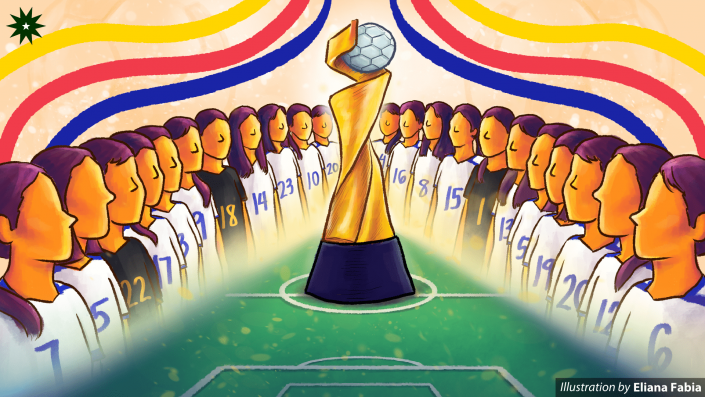Preparing for international tournaments can be a daunting task, which is why constant training to practice the techniques and to meet physical demands are vital. However, amid the ongoing COVID-19 pandemic, many athletes across the country have had fewer opportunities to see action in their respective sports—including the national women’s football team.
But this inadequacy did not hinder the Philippine women’s football team from performing in the AFC Women’s Asian Cup Qualifiers, snatching clutch victories against Nepal and Hong Kong last September.

Remembering the goal
With the high level of play in the tournament, preparations are much more different compared to football club matches. There, competition is unique; each country plays with their specific styles and strategies that not everyone could be familiar with.
As the main orchestrator of the team, national team coach Marlon Maro comments, “Each opponent [has] different characteristics, therefore, adjustments [are] vital.” He reiterates that while having a longer time to prepare for the tournament—including practice matches—could aid a team’s capability to deal with formidable foreign squads, it is not the sole determinant of a successful stint.
DLSU Lady Booter Shai Del Campo shares that the team did encounter some challenges in training, with some players unable to join the camp in the United States. As an effect, the concern regarding the team’s likelihood to still develop chemistry before a major tournament loomed above their heads as their roster featured a mix of old and new players. “It was challenging at first but the team had a lot more trust coming into the tournament and [it] gave everyone a chance to challenge themselves as well,” she explains.
Ultimately, their desire to grow as a unit and efforts to keep in touch were able to trump these worries.
“We all shared the same mindset despite the limitations, which helped us to push ourselves to do our best throughout the campaign,” the midfielder adds.
Delving deeper into their preparation, the matter of whether the government held a hand to support the team’s affairs was highlighted. Maro clarifies, “No, [it was] purely private finance [that aided us].” Instead, the Philippine Football Federation (PFF) served as the main source of financial support for Del Campo’s squad.
Despite the shortage in monetary aid, Del Campo assures that the team received enough essential needs, “We were equipped with the best help possible throughout the preparation and tournament, [and] were supported physically and mentally by the people behind the team.”
Looking back
Truth be told, Maro confesses he enjoyed the heart-racing thrillers against Nepal and Hong Kong. Both matches were coincidentally decided on in the final five minutes of play, both ending with a final score of 2-1. He recalls that despite being frustrated at times due to the lack of discipline from his team, the players had an infectious positivity which radiated outwardly. In the end, it is with their winning attitude that they delivered.
Aside from the games’ tremendous results, Del Campo chimes in that her favorite moment was solely being back on the field after being away from the action for a long year and a half.
In addition, she notes that the company of her teammates and the challenge of building chemistry within the squad were also what she enjoyed, especially when she celebrated her birthday with them.
Moving forward
Looking at the current track record of the Philippine women’s football team—ranking 13th in Asia and 68th worldwide—they are a highly competitive squad. However, a grassroots program must be stable enough to sustain this momentum.
One key issue in women’s football is the lack of professional and semiprofessional leagues that allow high caliber players to compete with one another. Much worse, players who are unable to join the national team are left without avenues to continue their careers after leaving collegiate level tourneys.
While non-profit organization Philippines Women’s Football Association was launched earlier this year to further support the growth of women’s football in the country, Del Campo stresses that this may not be enough. “The work that everyone has put into it is showing and I believe [women’s football] is slowly getting the recognition that it deserves but I believe that [more can be done].”
Maro echoes this, emphasizing that having relevant semiprofessional leagues while developing youth programs must be established to further develop the sport.
The national women’s football team’s insatiable hunger for a World Cup appearance—their current goal—will undoubtedly drive them to greater heights. With better support from the government and the PFF, they will be able to fully live out their World Cup aspirations. After all, achieving this feat would be a testament to the development of Philippine football as a whole, and to the solidification of women excelling in sports.
